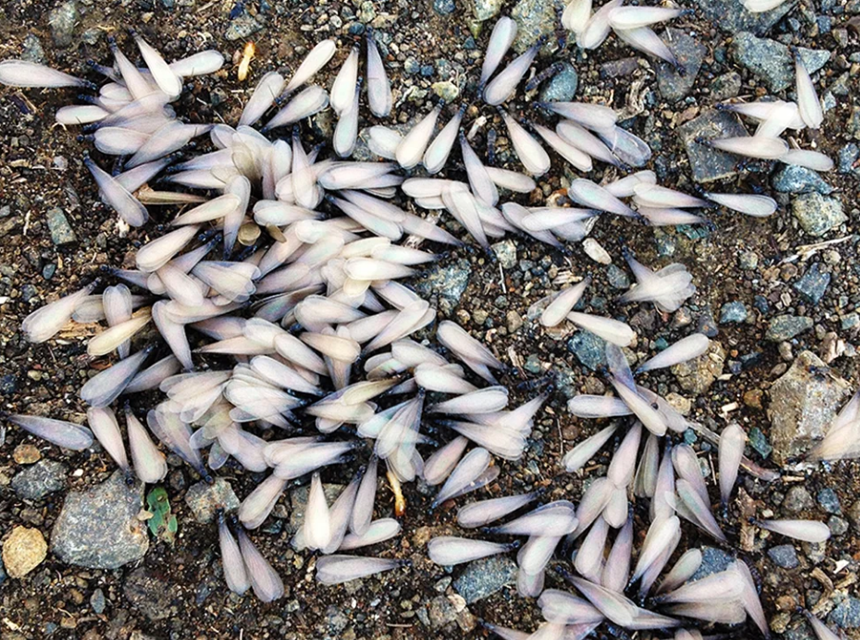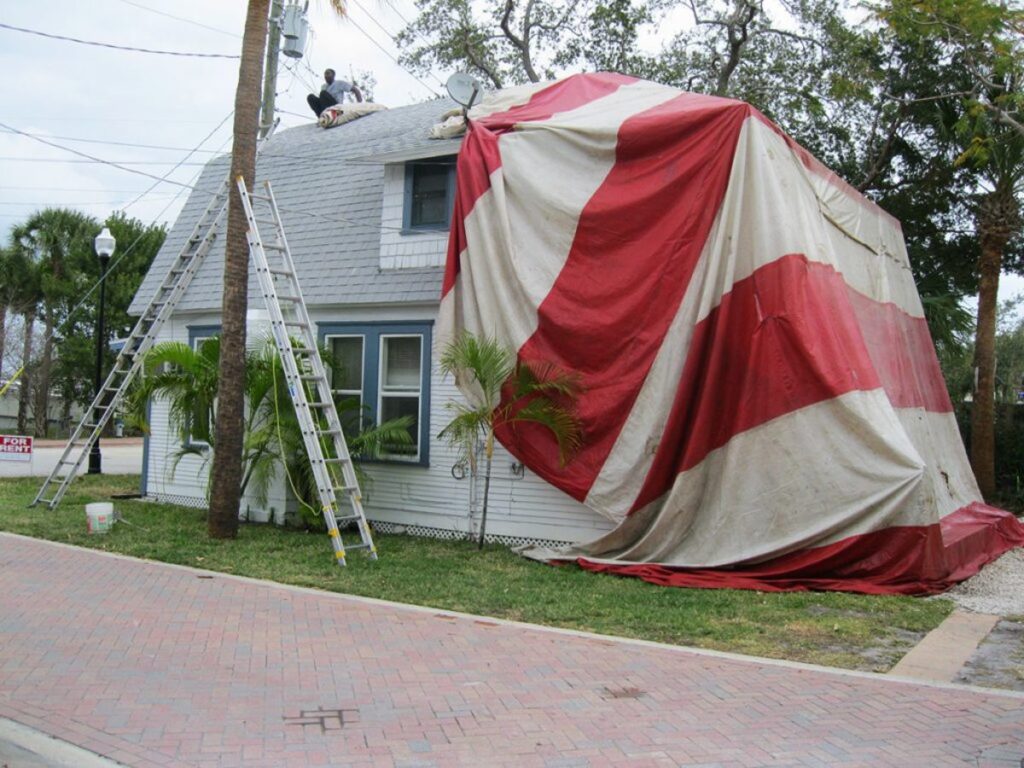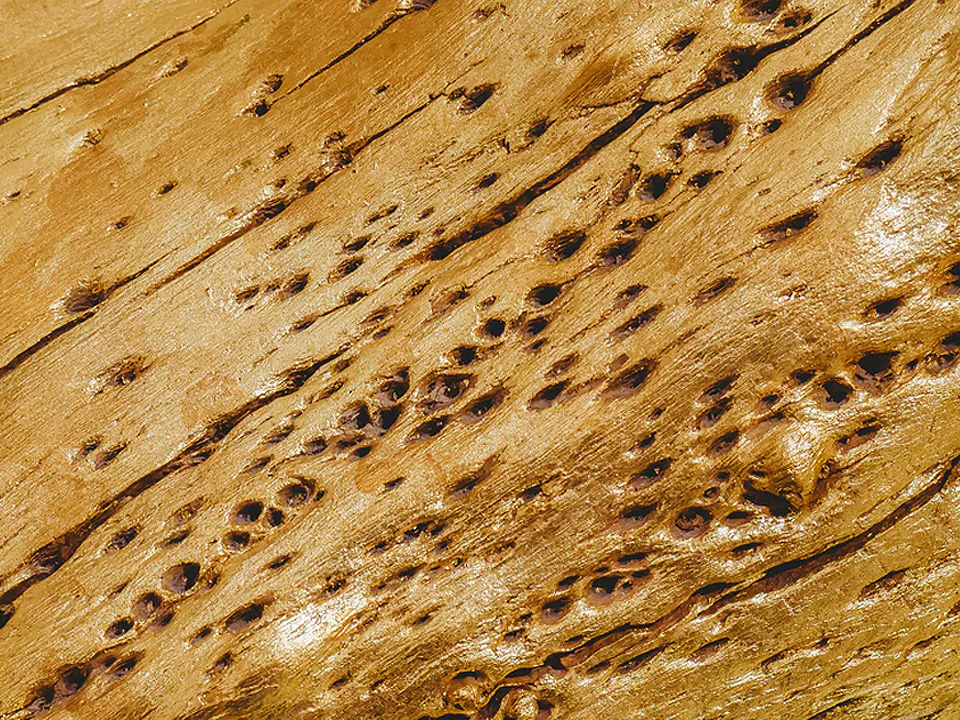

Individuals living in areas with high wood concentrations tend to face termite infestations more than in other places. Yearly, locations like Texas in the United States battle termite infestations. This brings us to the question on many minds: what do termites eat in wood?
Termites have structured mandibles that help them bite easily into the wood and build their nests. After building their home, they get the necessary food inside the wood without needing to come out. This makes it quite challenging to detect when a piece of wood is infested until damage starts showing.
All the basic things termites need to survive can be found easily in the wooden components of your home. Termites are cold-blooded creatures and require a place with a suitable temperature to stay. Once they find a good piece of wood, they dig their termite holes and create their nest inside the wood.
The mandibles of termites are specially designed for biting into wooden surfaces so that the termite have easy access to their food. Termites feed on tree roots, fungi, decomposing plants, and typical wooden components in the home, such as door and window frames. Due to their feeding habits, termites are categorized as detritivores.
Termites mostly eat fungi, sugarcane, tree roots, mango trees, pine trees, cotton, palm trees, and feces. The main thing termites derive from wood is cellulose. Cellulose is what wood is made of. By consuming and digesting wood, termites get all the cellulose they need to survive.
The internal organs of termites help decompose and separate the required cellulose from the wood consumed. This is why termites also feed on already decaying wood. It makes the work of breaking down wood much more effortless. After they take what they need from the wood, they excrete the rest in the form of tiny termite pellets.
These pellets can be seen around wooden objects that have been infected. The insects build small exit holes, pushing the excrement out of them. What do termites eat besides wood? Termites sometimes bite through plastic in their bid to get to the wood. However, the insects do not eat the plastic and only want to get past it.
What wood do termites not eat? Generally, termites can eat any timber, as long as it has not undergone pressure treatment. Pressure treatment is one of the ways to keep termites away from wood. Termites do not consume concrete and stay away from hardwood like cedar. However, termites can still eat cedar wood.
The video below shows what else termites eat besides wood.
Like other animals and insects, there are various species of termites worldwide. These species include dry wood, damp wood, and subterranean termites. One thing these termite species have in common is they feed on cellulose. However, they each get their cellulose differently from other types of wood or plant matter.
All termite species possess strong mandibles to bite through the wood. However, not all the termites in the nest can digest cellulose. Termites that can digest cellulose are known as worker termites. These termites feed their fellow insects. Different termite species feed on different types of wood. What do termites like to eat?
Drywood termites are the type that is commonly found in people’s homes. They usually feed on dry wood turned into different home components such as ceiling and floorboards, door frames, and kitchen cabinets. This specie of termites gets all the water they require from wood.
Drywood termites do not burrow into the soil like subterranean termites and can go unnoticed in dry wood for long periods before signs begin to show. When these insects bite through wood, they leave smooth marks behind, making it hard to discover the damage. You should check for dry wood termites if you notice smooth holes in your furniture.
Dampwood termites are usually found outside the home in gardens or bushy areas. As the name implies, this species of termites like to feed on damp wood or wood that has been exposed to water or moisture. These termites are usually found around dead logs of wood and decomposing plant matter.
This termite species bites through wet lumber and slowly digests them using stomach microbes. Dampwood termites are usually found outdoors, but if a wooden component of the home is constantly subjected to water or damp, damp wood termites can also feed on such wood.
Subterranean termites Trusted Source subterranean termite | insect | Britannica Other articles where subterranean termite is discussed: termite: Importance: Subterranean termites are dependent on contact with soil moisture and normally reach the wood in man-made structures through the foundations. The most common traditional control used around a structure is to flood a shallow trench with an insecticide and cover it with soil. Insecticides also… www.britannica.com have slightly different behavioral characteristics from other termite species. These termites live underneath the soil. What do subterranean termites eat? They feed on decaying plant matter and dead or damp tree roots. Subterranean termites prefer feeding on softwood fibers, unlike dry wood termites.
When wood is exposed to moisture from the soil, the fibers it contains become softer and much easier to eat than when it is hard. The temperature underground is more suitable for subterranean termites, and it also serves as a shelter from some predators. Subterranean termites usually leave behind a trail of mud-like tunnels made out of their feces.
Termites, like most insects, are cold-blooded creatures. Similar to ants, they live together in large numbers and work during most of their lifespan. Since termites are cold-blooded creatures, it is natural that they look for warmth during the winter months. Apart from termites that live in wooden components of homes, other termites have to burrow into the ground for food and warmth.
During warm seasons, worker termites leave the nests to look for food to bring back to the nest. What plants do termites eat during the winter? Termites feed on underground tree roots and decomposing plant matter to survive during winter. Once the winter is over, termites can leave the ground to gather food.
Drywood termites hardly change their diet regardless of season or weather conditions. They tend to stay in wooden components of homes and feed off these parts while living there.
Since they don’t need to go out in search of food, drywood termites don’t change their food pattern due to climate change.
The principal food of termites is cellulose. Wood is the best source of cellulose, hence, why termites love eating wood. Termites have bacteria in their stomach which helps them easily break down wood to get cellulose. Cellulose is difficult for other insects to digest, so very few insects feed on wood.
The cellulose present in wood provides the necessary nutrients termites need to survive. That is why species of termites can stay hidden in wood without showing significant signs for long periods. Since they can find all they need inside the wood, they don’t need to come out. Carpenter ants can also feed on wood. Individuals can use the best carpenter ant killers from stores to get rid of them.
Termites cause a lot of damage to wood. These little insects see wood as a food source, and continuous chewing of the fibers can compromise the wood. Drywood termites leave little tracks and are usually not discovered quickly. However, they tend to push out their frass through termite holes. This is the primary sign of termite presence.
Dampwood and subterranean termites have a habit of consuming their feces and using them to create mud-like tubes usually seen along walls and decaying wood. Once you identify termite pellets or mud-like tubes on your walls, you should call a professional to check your home.
There are different species of termites, all of which can be dealt with using pesticides and other products like Advance Termite Bait Stations. Flying termites are seasonal and often show up during the rainy season. A frequently asked question by many people is: how to get rid of flying termites?
Flying termites also share the same weakness as regular termites. Winged termites can be killed easily by making use of natural pesticides Trusted Source What to Know About Natural Pesticides Find out what you need to know about natural pesticides. Discover the risks and benefits. www.webmd.com . Some reviews also show that Advance Termite Bait System Trelona Kits also help solve termite problems. However, it is better to call a professional if you notice signs of termite infestation.
Termites are little insects found in almost every region of the world. What do termites eat? These little creatures survive on cellulose which is most commonly found in wood. Termites have structured mandibles that help them bite through wood effortlessly. They also have bacteria in their stomachs that aid in breaking down the wood into cellulose.
Drywood termites are primarily found in homes and places with little or no moisture. They bite through wooden components in the house and live there. Subterranean and damp wood termites prefer feeding off softwood or decaying plant matter. If you notice a termite infestation in your home, it is advisable to contact experts immediately.





